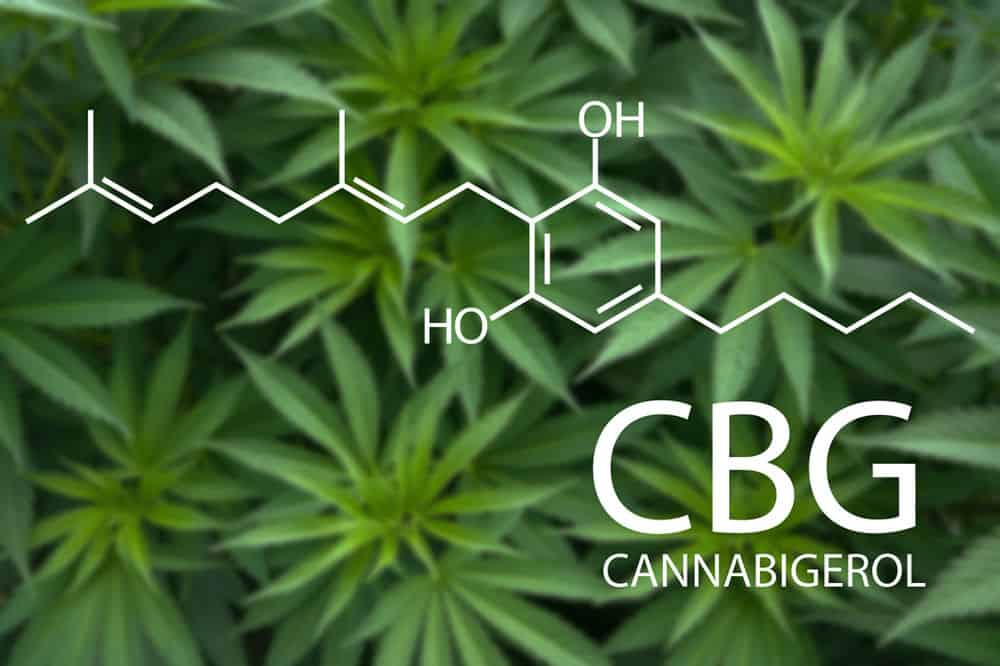Cannabigerol (CBG) is a cannabinoid found in the cannabis plant. It’s known as the “mother of all cannabinoids.” This is due to the fact that other cannabinoids are derived from cannabigerolic acid (CBGA), which is an acidic form of CBG.
Cannabidiol (CBD) and tetrahydrocannabinol (THC) are two other commonly obtained cannabinoids from cannabis plants (THC).
CBG is found in lower concentrations in cannabis plants than other cannabinoids. Most strains of the plant contain only 1% CBG, compared to 20 to 25% CBD or 25 to 30% THC.
As a result, cannabinoid-derived consumer goods are scarce and frequently expensive. CBG, on the other hand, is gaining popularity due to the numerous potential benefits the cannabinoid provides.

CBG is extracted from young cannabis plants, which contain more CBG than fully mature plants.
Some cannabis strains, such as White CBG, Super Glue CBG, and Jack Frost CBG, have higher CBG content than others. These strains are specifically bred to produce higher levels of CBG.
CBD and THC both begin as CBGA, an acidic form of CBG. This is why younger cannabis plants have higher CBG concentrations.
CBG concentrations are very low in fully developed plants with high THC and CBD concentrations. This is because the majority of the CBG has already been converted to CBD and THC as the plant has grown.
Due to the difficulty in obtaining CBG, cannabis growers have been experimenting with cross-breeding and genetic manipulation to help cannabis plants produce more CBG.
The endocannabinoid system in the body processes CBG. The endocannabinoid system in our bodies is made up of molecules and receptors that are in charge of keeping our bodies in an optimal state regardless of what is going on in our external environment.
CBG mimics endocannabinoids, which are natural compounds produced by our bodies.
CB1 and CB2 cannabinoid receptors are found in our bodies. CB1 receptors can be found in the nervous system and the brain, whereas CB2 receptors can be found in the immune system and other parts of the body.
CBG works by binding to both receptors, where it is thought to strengthen the function of anandamide, a neurotransmitter involved in pleasure and motivation, appetite and sleep regulation, and pain relief. CBG, unlike THC, has no psychotropic effects and will not get you high.
CBG, like CBD, has been used to treat pain without the intoxicating effects of cannabinoids such as THC.
CBG has been shown in studies to have therapeutic effects. Human studies, on the other hand, are scarce, and more research is required.
Some promising animal studies indicate that CBG may be useful in the treatment of certain medical conditions.
Chronic inflammation in the bowel is caused by inflammatory bowel disease. It affects millions of people worldwide and is incurable.
CBG was found to be beneficial for inflammatory bowel disease in an animal study conducted in 2013.
In the colons of mice, researchers induced inflammation similar to that seen in IBD and then administered CBG. CBG was discovered to reduce inflammation and nitric oxide production. It also inhibited the production of reactive oxygen species (ROS) in the intestines. They came to the conclusion that CBG should be considered for clinical trials in IBD patients.
Researchers discovered that CBG has therapeutic potential for the treatment of glaucoma in an animal study.
Researchers gave CBG to glaucoma-affected cats and observed a decrease in eye pressure and an increase in aqueous humour outflow, a fluid produced by the eye that maintains eye pressure and provides nutrition to the eye.
Researchers discovered that CBG has therapeutic potential for the treatment of glaucoma in an animal study.
Researchers gave CBG to glaucoma-affected cats and observed a decrease in eye pressure and an increase in aqueous humour outflow, a fluid produced by the eye that maintains eye pressure and provides nutrition to the eye.
According to a 2020 study on cannabis’ antibiotic potential, CBG has antibacterial properties, particularly against methicillin-resistant strains of Staphylococcus aureus (MRSA), the drug-resistant bacteria that causes staph infections.
CBG showed promise in a 2014 study of rats with colon cancer in blocking the receptors that cause cancer cell growth and inhibiting the growth of colorectal cancer cells. The researchers proposed that CBG be used in the treatment and prevention of colon cancer.
Oil is the most common commercially available form of CBG, but it is scarce and expensive.
Broad-spectrum CBD oils, on the other hand, contain nearly all of the cannabinoids found in cannabis. CBG is included, but not THC. The entourage effect occurs when cannabinoids are used together to increase their combined effectiveness.
Respondents reported dry mouth, sleepiness, hunger, and dry eyes as side effects in the first large survey of patients using CBG to treat issues such as insomnia, chronic pain, depression, and anxiety. Some claim that CBG is more effective than conventional medications, some of which have serious side effects and can lead to addiction.
Although research on CBG and other cannabinoids’ potential side effects and drug interaction risks is expanding, not enough has been completed to reliably determine CBG’s side effects and drug interaction risks.